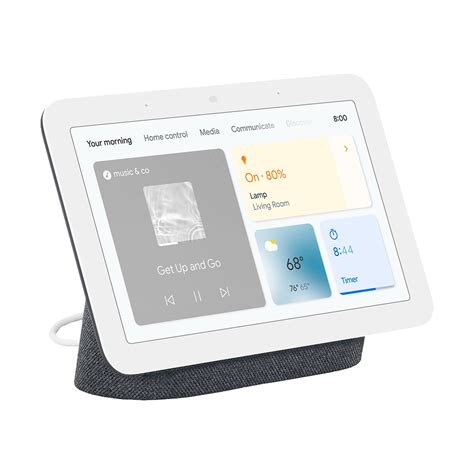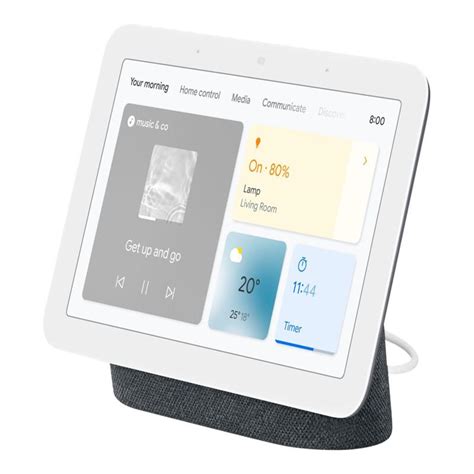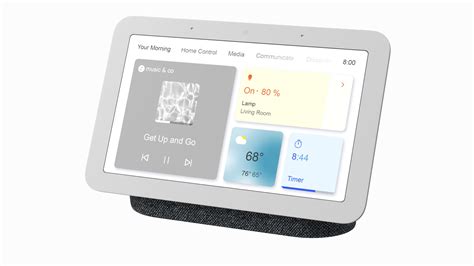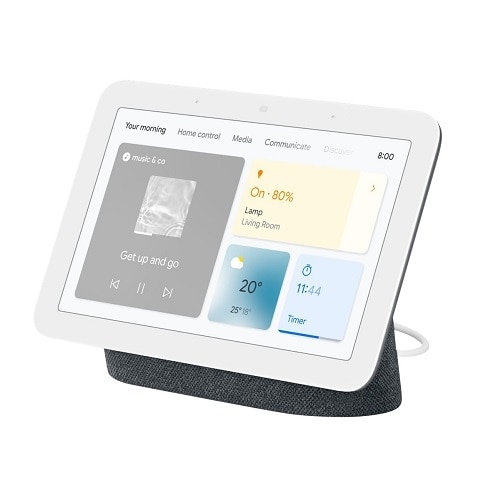In today’s rapidly evolving tech landscape, selecting the perfect smart device for your home can be overwhelming. With countless options on the market, it’s crucial to focus on key features that can enhance your daily life. This article explores the top factors to consider when choosing a new device, from display quality and sound performance to smart home integration and privacy features. We’ll dive into aspects such as video calling capabilities, voice control, and entertainment options, providing a comprehensive overview of what to look for. By examining these elements, we aim to help you make an informed decision and
Join ujojan.net as we delve deeply into this topic.
1. Display Quality and Size
When evaluating smart devices, display quality and size are crucial factors that significantly impact your user experience. A high-resolution display ensures sharp, clear visuals, whether you’re watching videos, browsing the web, or using apps. Look for devices with at least Full HD (1920×1080) resolution, though 4K displays (3840×2160) offer even greater clarity and detail. The size of the display should align with your usage needs and preferences; larger screens provide a more immersive experience but may require more space.
In addition to resolution and size, consider the type of display technology used. OLED screens, for example, deliver deeper blacks and more vibrant colors compared to traditional LCDs. Touchscreen capabilities also enhance interactivity, making navigation and control more intuitive.
For devices intended for streaming or gaming, a higher refresh rate—such as 120Hz or more—can offer smoother motion and a better overall experience. Additionally, ensure that the display has good viewing angles and minimal glare to maintain clarity from various positions in the room. Balancing display quality with size and technology will help you choose a device that meets your needs and enhances your home entertainment and productivity.

2. Sound Quality
Sound quality is a vital aspect of any smart device, directly influencing your overall experience with media consumption, calls, and notifications. High-quality audio enhances movies, music, and video games, making them more immersive and enjoyable. Look for devices that feature clear, balanced sound with good bass and treble. Stereo speakers are typically better than mono for creating a richer audio experience, while devices with surround sound capabilities can offer a more cinematic feel.
Consider the speaker placement and design of the device, as these factors affect sound projection and clarity. Front-facing speakers generally provide a more direct and balanced audio experience compared to downward-facing or rear speakers. Additionally, devices with advanced audio technologies, such as Dolby Atmos or Hi-Res Audio, can offer superior sound quality and a more dynamic listening experience.
For those who prefer private listening, check if the device supports high-quality Bluetooth or wired headphones. Some devices also come with built-in audio enhancement features, such as equalizers or sound modes, allowing you to customize the audio output to suit your preferences.
In summary, when evaluating sound quality, focus on clarity, balance, and technology to ensure that your smart device delivers an exceptional audio exper

3. Smart Home Integration
Smart home integration is a pivotal feature for modern devices, enhancing convenience and connectivity within your living space. A device that seamlessly integrates with your existing smart home ecosystem can simplify control and automate various functions. Look for compatibility with popular smart home platforms such as Google Assistant, Amazon Alexa, or Apple HomeKit, as this ensures smooth interaction with other smart devices like lights, thermostats, and security systems.
Devices with built-in smart home hubs can serve as central control points, allowing you to manage multiple devices from one interface. This integration not only streamlines your home automation but also improves efficiency and ease of use. Consider devices that support voice commands for hands-free operation, enabling you to control settings, adjust lighting, or play music with simple voice prompts.
Additionally, ensure the device can connect to your home network reliably, as stable Wi-Fi or Ethernet connections are essential for effective smart home communication. Look for features like customizable routines or automation options that allow you to set schedules or triggers base

4. Video Calling and Messaging
Video calling and messaging capabilities are essential for staying connected in today’s digital world. When evaluating a smart device for these features, consider the quality of its built-in camera and microphone. High-resolution cameras, ideally 1080p or higher, ensure clear and sharp video during calls. Look for devices with advanced camera features such as auto-focus and low-light enhancement to improve image quality in various lighting conditions.
The audio quality is equally important; devices with noise-cancelling microphones and clear speaker output enhance communication by reducing background noise and ensuring that voices are heard clearly.
Check for compatibility with popular video calling platforms like Zoom, Microsoft Teams, or Google Meet, which can streamline your communication process. Additionally, devices that offer integrated messaging apps or support for popular messaging services allow for easy text communication alongside video calls.
A user-friendly interface for managing calls and messages, along with reliable connectivity options, ensures that video calling and messaging are smooth and efficient, making it easier to stay connected with friends, family, and colleagues.
5. Voice Control and Hands-Free Assistance
Voice control and hands-free assistance are integral features for enhancing convenience and accessibility in modern smart devices. A device with robust voice control capabilities allows you to perform tasks, control settings, and interact with applications using voice commands, minimizing the need for physical interaction. Look for devices that support major voice assistants like Amazon Alexa, Google Assistant, or Apple Siri, as these platforms offer extensive functionality and integration with a wide range of smart home devices.
Effective voice control should include features such as natural language processing and the ability to recognize and respond to a variety of commands. Ensure the device has a built-in microphone with good sensitivity and noise cancellation to accurately pick up voice commands even in noisy environments.
Hands-free assistance can significantly improve user experience by enabling multitasking and allowing you to manage tasks while engaged in other activities. Devices that support voice-triggered routines or automation can streamline everyday tasks, such as adjusting home settings or playing your favorite music.
In summary, comprehensive voice control and hands-free assistance enhance the usability and functionality of a smart device, making it easier to interact with technology and manage your home environment effortlessly.
6. Entertainment and Streaming
Entertainment and streaming capabilities are crucial for any smart device, as they determine how well the device can enhance your leisure time. A high-quality display, combined with robust audio, significantly improves the experience when watching movies, TV shows, or playing games. Look for devices that support popular streaming services like Netflix, Hulu, Amazon Prime Video, and Disney+, and ensure they are capable of handling high-definition or 4K content for the best visual experience.
Additionally, check for features such as built-in apps or compatibility with streaming devices like Chromecast or Roku. Some smart devices also offer integrated entertainment hubs or media players, which can consolidate multiple services into one interface, simplifying access and management.
Devices with fast processing power and ample memory can handle large files and support smooth streaming without buffering. Also, ensure that the device supports the latest streaming standards and codecs to guarantee compatibility with current and future media formats.
In essence, a device’s ability to deliver high-quality entertainment and seamless streaming enhances its value, making it a central hub for your media consumption and relaxation.
7. Home Monitoring and Security
Home monitoring and security features are essential for maintaining safety and peace of mind in a smart home environment. A device that integrates well with home security systems can significantly enhance your ability to monitor and protect your property. Look for devices that offer compatibility with popular security systems and smart home hubs, allowing seamless integration with cameras, alarms, and sensors.
Key features to consider include real-time video feeds from security cameras, which should provide clear and high-resolution images for effective monitoring. Devices with motion detection and alerts can notify you of unusual activity, enabling prompt responses to potential security threats. Additionally, features like two-way audio allow you to communicate with visitors or intruders through the device.
For comprehensive home monitoring, consider devices that support remote access via smartphone apps, enabling you to check on your home from anywhere. Integration with smart locks and access controls can further enhance security by allowing you to manage entry points and monitor access remotely.
Furthermore, ensure that the device includes robust encryption and privacy features to protect your data and safeguard against unauthorized access. In summary, effective home monitoring and security capabilities provide valuable protection and control, contributing to a safer and more secure living environment.
8. Personalized Home Screen
A personalized home screen enhances user experience by allowing you to customize the interface according to your preferences and needs. This feature lets you arrange widgets, apps, and shortcuts in a way that prioritizes your most-used functions and information. Look for devices that offer flexible customization options, such as the ability to change layouts, select preferred backgrounds, and add or remove widgets based on your daily activities.
Customization options may include adjusting the size and position of icons, choosing themes or color schemes, and integrating personal shortcuts for quick access to favorite apps or services. Some devices also allow you to set up personalized notifications and alerts, ensuring that important information is easily accessible.
A well-designed personalized home screen can streamline navigation, making it more intuitive and efficient. It enhances the overall user experience by aligning the device’s interface with your specific preferences and usage patterns, making interactions smoother and more tailored to your individual needs.
9. Privacy and Security Features
Privacy and security features are crucial for protecting your personal information and ensuring safe device use. Look for devices that offer robust privacy settings and encryption to safeguard your data from unauthorized access. Key features to consider include secure login methods such as biometric authentication (fingerprint or facial recognition) and strong password protection.
Ensure that the device supports regular software updates to address security vulnerabilities and protect against emerging threats. Privacy controls should allow you to manage permissions for apps and services, giving you control over what data is shared and with whom. Additionally, features such as activity logs can help you monitor and review access and usage patterns.
For enhanced security, choose devices that offer built-in firewalls and malware protection, as well as options to remotely wipe data in case of loss or theft. Comprehensive privacy and security features not only protect your information but also provide peace of mind, knowing that your device and data are secure.
10. Setup and Ease of Use
Setup and ease of use are fundamental aspects of a smart device’s overall functionality, impacting how quickly and effectively you can integrate it into your daily routine. A device with straightforward setup processes and user-friendly interfaces ensures a smooth experience from the start. Look for devices that offer intuitive installation guides, step-by-step instructions, and minimal configuration requirements.
Devices with easy-to-navigate menus and responsive touchscreens enhance usability by allowing quick access to settings and features. Consider options that provide guided tutorials or onboarding processes to help you familiarize yourself with the device’s functions and capabilities.
Additionally, assess the device’s compatibility with existing technology and networks to avoid compatibility issues during setup. Features such as automatic software updates and remote troubleshooting can further simplify maintenance and enhance ease of use.
Overall, a device that prioritizes ease of setup and user-friendly operation ensures a seamless experience, enabling you to enjoy its full range of features without unnecessary hassle or complexity. This contributes to a more eff
11. Price and Availability
Price and availability are key factors to consider when selecting a smart device, as they directly impact your purchasing decision and budget. The cost of a device can vary widely based on its features, brand, and specifications. It’s important to compare prices across different retailers and platforms to find the best deal. Look for sales, discounts, or bundle offers that might provide additional value.
Consider the device’s value for money by evaluating its features and capabilities relative to its price. A higher price doesn’t always guarantee better performance, so ensure that the device’s specifications align with your needs and expectations.
Availability is another crucial aspect; check whether the device is readily available in local stores or online. Some devices might have limited availability or be subject to backorders, which can affect your purchasing timeline. Researching availability and considering alternative sources can help avoid delays.
Additionally, consider warranty and after-sales support when assessing value. Devices with comprehensive warranties and reliable customer service offer better long-term value and peace of mind. Balancing price with the device’s features, availability, and support ensures that you make an informed purchase that meets your needs and budget.
12. Pros and Cons
When evaluating a smart device, understanding its pros and cons can help you make an informed decision.
Pros:
Advanced Features: Many smart devices offer cutting-edge technology, including high-resolution displays, superior sound quality, and seamless integration with smart home systems.
Convenience: Voice control, hands-free assistance, and personalized home screens enhance user experience and simplify daily tasks.
Entertainment Value: Robust streaming capabilities and home monitoring features provide added functionality and enjoyment.
Customizability: Devices often allow personalization of settings and interfaces to suit individual preferences.
Cons:
Cost: High-quality smart devices can be expensive, and the price may not always reflect the best value for every user.
Complexity: Advanced features can sometimes lead to a steep learning curve, making setup and use more challenging.
Privacy Concerns: Integration with various networks and services may raise privacy and security issues if not properly managed.
Availability: Some devices may have limited availability or face delays, affecting your purchase timing.
Balancing these pros and cons will help you select a smart device that aligns with your needs and expectations.
Choosing the right smart device involves evaluating key factors like display quality, sound performance, and smart home integration. By considering features such as video calling, voice control, and privacy measures, you can find a device that enhances your lifestyle. Balancing pros and cons, along with price and availability, will guide you in making an informed decision, ensuring you select a device that meets your needs effectively.
ujojan.net

